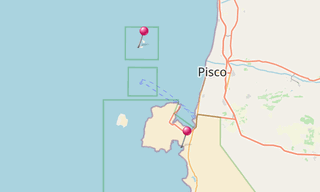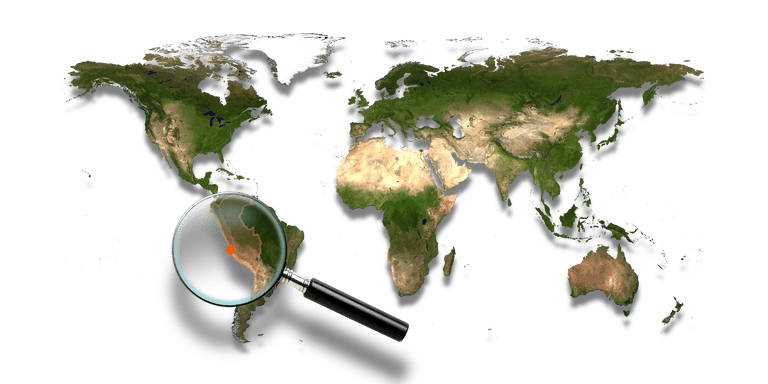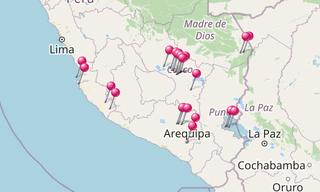The Paracas National Reservation (Reserva Nacional de Paracas) is located in the Ica region south of Lima with the purpose to preserve the ecosystem and to protect the historical and cultural heritage. As much as 216 species of birds are living in the reserve. The desert area is the home of the Pre-Inca Paracas culture, known for its polychrome shawls made with camel wool and cotton which dates back to 600 BC.
It spans an area of 335,000 hectares, 65 % of which correspond to marine ecosystems. The highest elevation in the reserve is 786 m. The reserve includes coastal geographic features such as: the Paracas Peninsula, Independencia Bay, San Gallán Island, Paracas Bay, Islas Ballestas and Independencia Island. Punta Arquillo and Yumaque beach are located at the southern end of the Paracas Peninsula.
Islas Ballestas
The Ballestas Islands are a group of small islands near the town of Paracas on the south coast of Peru. Composed largely of rock formations and covering an estimated area of 0.12 km², these islands are an important sanctuary for marine fauna like the guanay cormorant, the peruvian booby and the tendril.
Other notable species include Humboldt penguins and two varieties of seals (fur seals and sea lions), amongst other mammals. These islands are accessible from the resort town of Paracas (near Pisco) by tour boat which typically lasts 2 hours. On the way to the islands, on the Paracas Peninsula, visitors will notice El Candelabro, a large-scale geoglyph.
Pisco
Pisco is a city located in the Region of Ica, and is the capital of the Pisco Province. The city is around 9 m above sea level. Pisco was founded in 1640, close to the indigenous emplacement of the same name. Pisco originally prospered because of its nearby vineyards and became noted for its grape brandy or pisco which was exported from its port.
Pisco has an estimated population of 104,656 (2015). In 1820, the Liberating Expedition arrived in Pisco under the command of José de San Martín and Bernardo O’Higgins Riquelme, disembarking in the Bay of Paracas, where the first flag and the first national emblem of Peru were created.

-Punta-Arquillo.hero.landscape.jpg?w=1600)


-Punta-Arquillo.jpg?w=256)
-Playa-Yumaque.jpg?w=256)
-Islas-Ballestas-Guanay-Cormorant.jpg?w=256)
-Punta-Arquillo.jpg?w=256)
-Islas-Ballestas-Guanay-Cormorant.jpg?w=256)
.hero.jpg?w=320)
